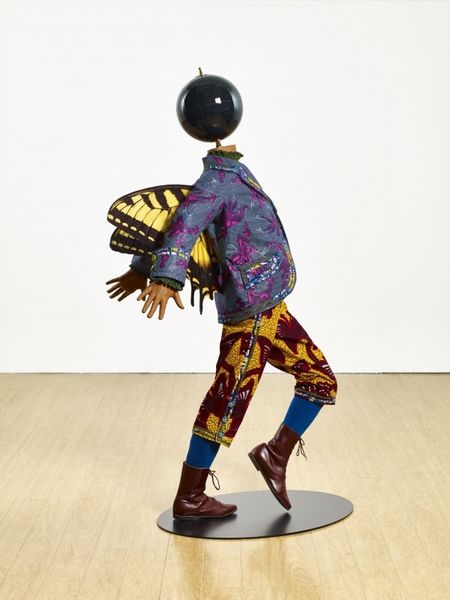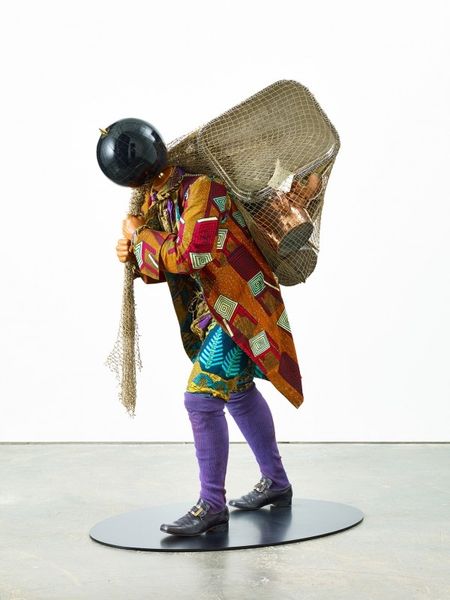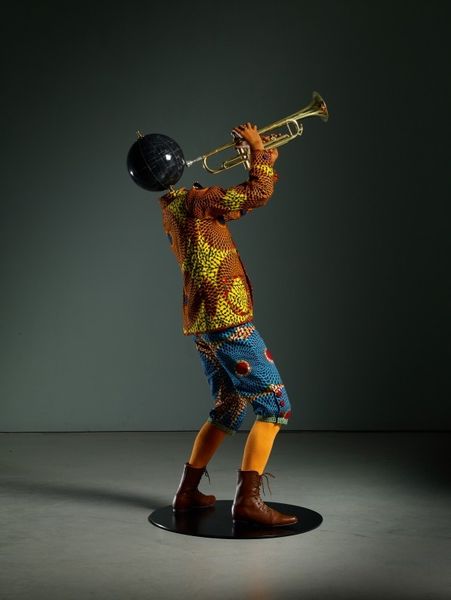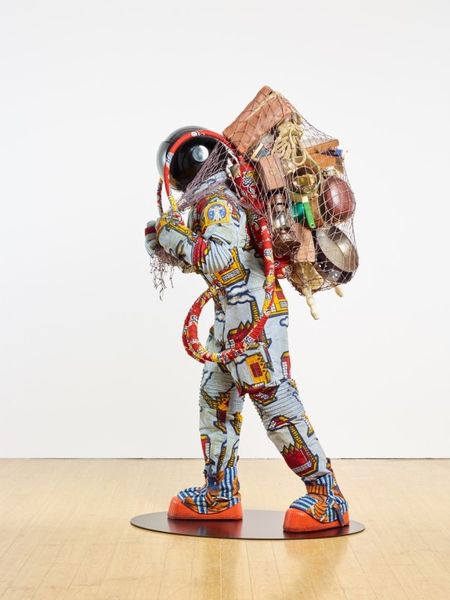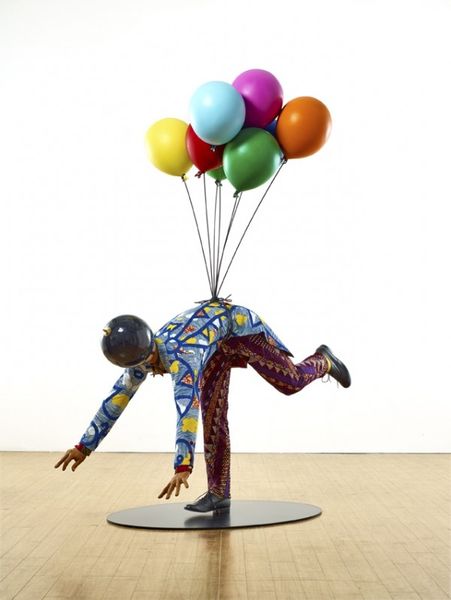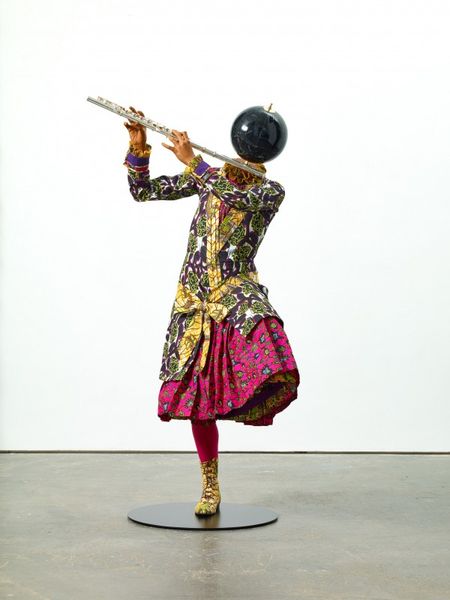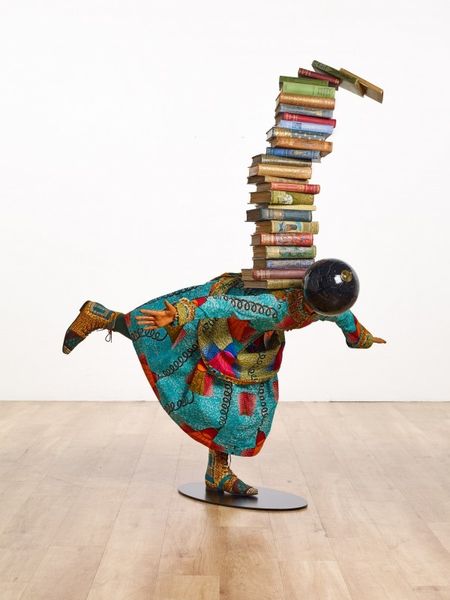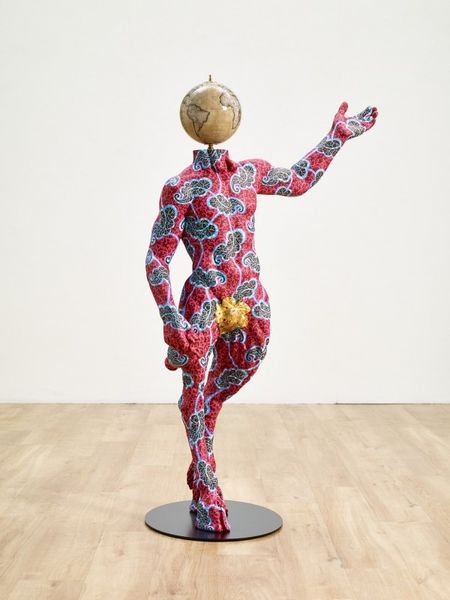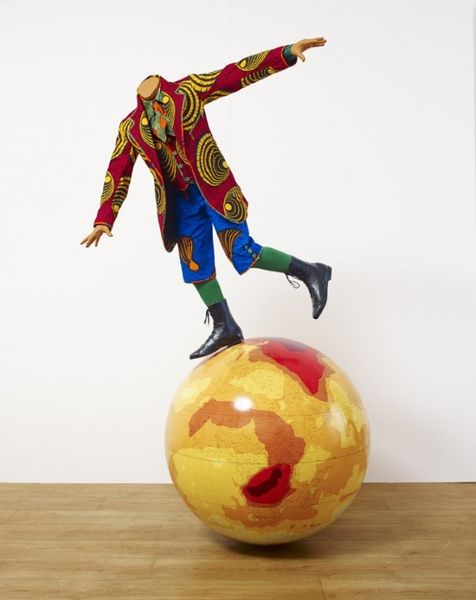
mixed-media, performance, sculpture
#
mixed-media
#
contemporary
#
performance
#
appropriation
#
caricature
#
figuration
#
sculpture
Copyright: Yinka Shonibare,Fair Use
Curator: Standing before us is Yinka Shonibare's "REVOLUTION KID (FOX)," created in 2012 using a mixed-media approach, including fabric, sculpture and what appears to be performative elements in its overall design. Editor: My first reaction is that it’s wonderfully unsettling! The vivid textiles combined with the fox head… it creates such an uncanny and thought-provoking visual experience. The playful use of colors alongside that gold gun is particularly striking. Curator: Absolutely. Shonibare's figures often explore themes of colonialism and post-colonial identity. He cleverly employs Dutch wax fabrics—which, ironically, have Indonesian origins and were mass-produced by the British—to critique notions of authenticity and cultural hybridity. The figure, with its fox head and vibrant attire, seems to embody this tension. Editor: And the fox itself! It’s a trickster, a figure often associated with cunning and subversion. Pairing that with a revolutionary stance… Is Shonibare suggesting that revolution itself can be a sly, perhaps even morally ambiguous act? How does the contemporary socio-political landscape impact your understanding of the piece? Curator: Indeed. This work enters a discourse on visibility, especially concerning questions about the dominant cultural hegemony, by critiquing our conventional interpretations. It makes you question: who defines revolution and whose history is privileged in mainstream narratives? This sculpture speaks to marginalized narratives of power, identity and cultural belonging within broader power systems. Editor: Right, the materials contribute so much. These vibrant fabrics – beautiful, but carrying such loaded histories – it seems impossible to separate aesthetics from historical awareness. How can we separate the art and its meaning if we understand what went into making them in the first place. Curator: Precisely, and that inherent connection forces the observer to question these complex power structures on full display, both in and beyond our institutions. It allows us to have these broader social commentaries that directly influence cultural, economical, and political ideologies in the twenty-first century. Editor: Looking at it all together now, there is an inherent challenge for cultural norms in the materials used that reflect an experience. Thank you! Curator: I agree! Hopefully the listeners walk away with a fresh sense of visibility, especially concerning the interpretation and implementation of institutional standards that guide them.
Comments
No comments
Be the first to comment and join the conversation on the ultimate creative platform.
